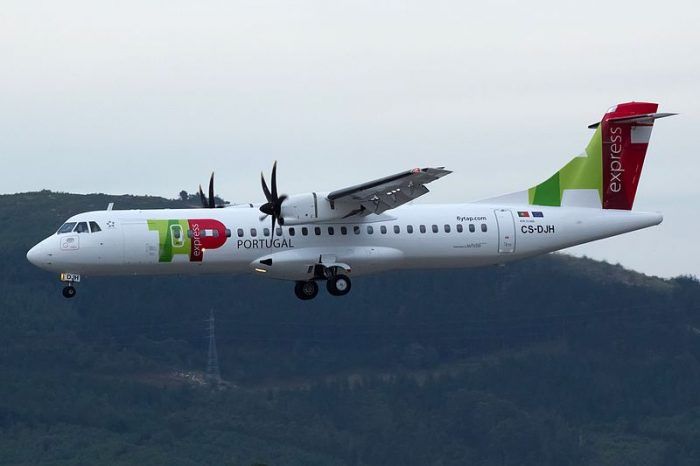ATR 72 tail-strike inquiry cites pilot-shortage pressure

Portuguese investigators have indicated that a shortage of pilots might have pressured carrier White Airways to release a trainee ATR first officer for flight without a safety pilot, the day before a damaging tail-strike at Fez.
The ATR 72-600 had been operating Lisbon-Fez, on behalf of TAP Express, on 6 July last year with the trainee first officer as the flying pilot.
Investigation authority GPIAA says the aircraft’s approach path destabilised after the autopilot was disengaged at 1,300ft, some 4.3nm from the runway 27.
The aircraft, operating in visual conditions, began to dip below the ILS glideslope and its airspeed declined from the calculated 109kt approach speed.
Its pitch was increased and the aircraft levelled at 700ft. But this caused it to pass above the glideslope, where it remained until a nose-down input at 350ft increased its descent rate to 800ft/min and its airspeed to 116kt.
At 200ft the ATR flew below the angle of the precision approach path indicator lights, maintaining its 800ft/min descent rate until 80ft.
Despite the destabilised approach the crew did not call for a go-around.
As the first officer flared the aircraft, the captain also took the control column at 20ft and made a nose-up input. But the aircraft, travelling at 103kt with a descent rate of 740ft/min, landed hard at 3g and its pitch of 6.4° was sufficient to allow its aft fuselage to strike the runway and scrape it for a distance of 350m.
The ATR bounced twice, with a second contact of 1.4g and a third at 1.2g, before it settled on the runway. It sustained abrasion and deformation damage to its aft fuselage underside.
GPIAA says the first officer had logged less than 48h on type, out of a total flight time of 269h.
Although she was experiencing difficulties in maintaining runway alignment and approach speed, she had been signed off to fly without a safety pilot – by the operator’s safety manager – on the day before the accident.
The inquiry points out that White Airways’ ATR operation is “demanding and intense” in terms of hours and cycles.
At the time the carrier had 41 captains and 28 first officers, plus five trainee first officers, for eight aircraft. Although it had a planned ratio of five crews per aircraft, the ratio for first officers was only 3.5.
GPIAA says the carrier had problems in recruiting and selecting new crews, given its size and type of operation.
“At the time of the event, operators found it difficult to maintain their pilot workforce due to market conditions,” says the inquiry.
“The lack of pilots in the operator – in particular first officers – may have conditioned the trainee first officer’s release for flight without a safety pilot, even though she revealed aircraft handling difficulties during the landing phase.”
GPIAA says the operator’s policy for trainees’ line flying under supervision required 40 sectors to be flown, with the first four at least involving supervision by a captain and a safety pilot.
Remarks during the first officer’s training at this stage included several comments regarding aircraft handling during the approach, short final and landing.
Flight without the safety pilot was authorised on 5 July, on sector 26 of the line flying under supervision phase, says the inquiry. The captain of the aircraft involved in the Fez accident was aware of the first officer’s weaknesses and had access to training records, as well as a special not requiring the trainee to improve landing handling.
